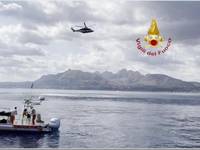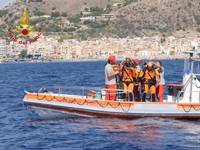Volvo Penta to Power Volvo Ocean Race
Volvo Penta is the official engine supplier for the 2014-2015 Volvo Ocean Race, which is having its North American stopover in Newport, R.I., this week.
“The Volvo Ocean Race serves as a crucible for developing and testing new technologies that will benefit the entire marine industry,” said Ron Huibers, president of Volvo Penta of the Americas. “We take innovation very seriously at Volvo Penta, and it’s exciting to be at the cutting edge represented by these high-performance sailing machines.”
Each of the One-Design Volvo Open 65 sailboats is equipped with a single Volvo Penta D2-75 four-cylinder diesel engine with S-drive. The engines are primarily used to produce electricity for the freshwater maker, lights, heating and electronic navigation and communication systems. It also drives the hydraulics for the canting keel. Race rules do not permit the engine to be used for propulsion when racing under wind power, but it can be used for maneuvering in port and in emergency situations underway, such as a man overboard rescue.
The 39,000 nautical mile round-the-world race in high-speed sailboats puts high demands on reliability and performance for the D2-75 engines. The main stress on the engines comes from the enormous G-forces induced by the very high speeds and violent motions of the boats, far in excess of the standard wear and tear experienced on normal boats.
Volvo Penta’s worldwide service network is providing extensive support for the vessels throughout the race. At every stopover, there is an appointed Volvo Penta service dealer responsible to check the engines and perform scheduled maintenance. The dealers are supported by Magnus Gedda, a specialist from Volvo Penta, who keeps a record of each engine and shares expertise with the dealer and the yacht crews.
For the Newport stopover, DePaul Diesel Service of Portsmouth, R.I., is servicing the engines on the racers.
The D2-75 engine and the Volvo Penta support team proved their value when the Dongfeng race team was forced to withdraw from Leg 5 with a broken mast. The boat docked in Argentina for repairs, then prepared to travel the 2,000 nautical miles at best speed to rejoin the race in Itajai. Gedda and the Volvo Penta engineering team stepped in to assist, using sea trial data for the engines to determine the most fuel-efficient speed and the fuel capacity that would be needed. It was clear that the 200-liter fuel tank would be insufficient for such a long voyage, so Gedda solved the problem by using the front ballast water tank for fuel. This increased the fuel volume by 1,000 liters. The Dongfeng delivery crew was able to reach Itajai in one single long leg under a combination of wind and engine power without having to stop and refuel along the way. On the boat’s arrival in Itajai, Gedda immediately inspected the engine and found it to be in great shape.
Technical Specifications
Engine Volvo Penta D2-75 with S-Drive
Crankshaft kW/hp 55/75
Rated rpm 3,000
Cylinders 4
Displacement, liters 2.2
Alternator 12V 115A (with built-in charging sensor)




